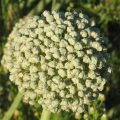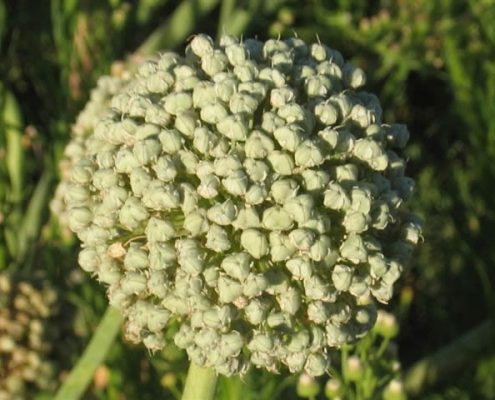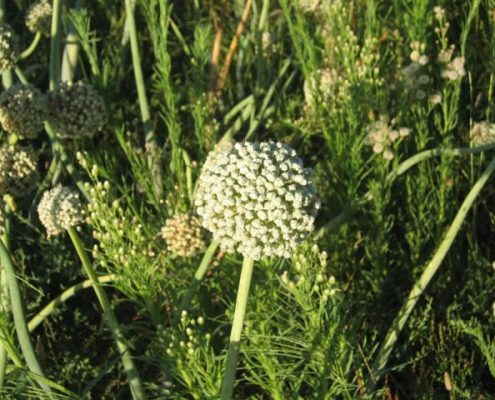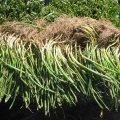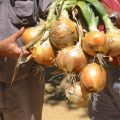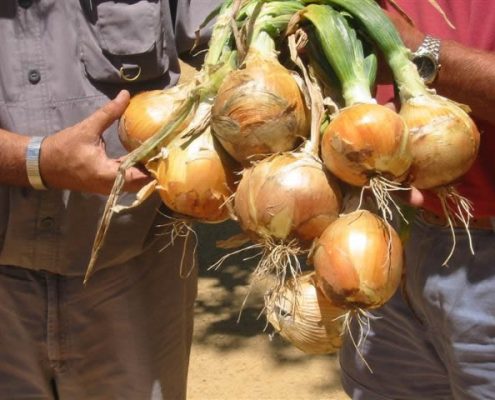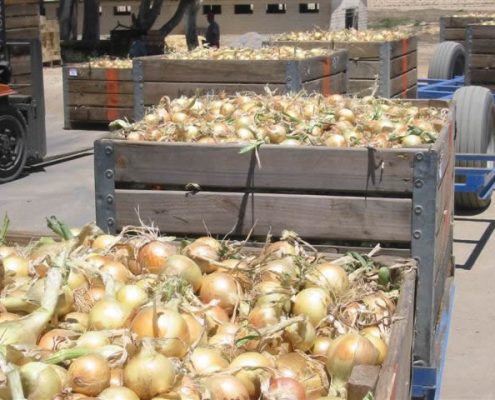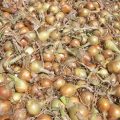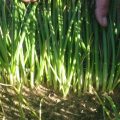KORKOM ONIONS
KORKOM’s onion division started in 1986 and since then, our members grow more than 3000ha of onions each year.
Did you know in the middle ages, onions were valuable enough to be used as a currency???
ONIONS – DID YOU KNOW?
History
Onions, garlic, leeks and shallots are all members of the same botanical genus Allium. The origin of onions (Allium cepa) is a mystery. They are not found in the wild but have been cultivated for at least 5000 years with numerous publications on their health benefits.
Health benefits
The flavour of onions is mainly produced when tissue is damaged. Over 60 sulpur containing flavour compounds are produced. It is these compounds that are thought to endow onions with many of their health benefits.
Onions has been shown to have anti-asthmatic and anti-histamine activity. This has been attributed to the cepaenes and thiosulphinates.
Onions are a good source of vitamin C, an antioxidant and essential for efficient uptake of iron. Red onions are rich in antioxidants such as quercetin. Quercetin also found in green tea has been found to help prevent heart disease and colon cancer. A special attribute of the onion is that it is one of the few products where the quercetin is retained during the cooking process.
Raw onion naturally reduces the tendency of the blood to clot so reducing the chance of a blokage at an atherosclerotic swelling.
Why do onions make you cry?
Onions contain a watersoluble organic sulpur compound called alliin which causes the tears. This is present in varying amounts in different onions. When the onion bulb is cut the enzyme alliinase acts on the alliin to produce an organic sulphur compound which reacts with water (the moisture in your eyes) to produce sulphuric acid which in turn produces tears and makes your eyes sting.
PHOTOS
WORKGROUP
The Onion Work Group provides a valuable service to the Korkom farming community. This service includes the following:
• Cultivar evaluation programme
• Improvement of soil quality including numerous physical, chemical and biological properties
• Agricultural practices applied to improving soil conditions
• Agricultural practices applied to improving crop production and protection
• Rotations
• Mechanical harvesting and
• Development of sustainable farming practices
• Development and continuous upgrading of MRL lists
• Alliance with Stellenbosch Disease Clinic
Activities:
Cultivar evaluation programme which includes the following:
• The evaluation of nine early, nine mid and eight late onion cultivars.
• The evaluation takes place in 5 different micro-climates in the Ceres area.
• 5 Different Seed Companies take part.
• It is done over a period of three years.
• Development and frequent update of MRL data.
• Chemical product registration.
• Identification and development of control measures of new Snoutbeatle genus.
USEFUL LINKS
MAP OF PRODUCTION
Please note*** Use the right corner controls to zoom in or out or simply by using the drag option, navigate the map to view all the production areas.


